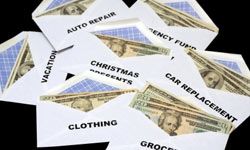Saving money should be a no-brainer. But a few years ago, most Americans just weren't doing it. They only held on to 1 percent of their income in 2005, which is well below the 12 percent personal savings rate they achieved in the 1980s. The financial crisis of 2008, however, was a shock that made many people aware of the need to build a cash cushion. The national personal savings rate bounced back to about 5 percent by 2011 [source: St. Louis Fed].
But since savings accounts normally pay less than 1 percent interest, some people think they need the advice of financial experts to grow their nest eggs. The fact is, though, that accumulating savings is not rocket science. And those low interest rates actually make regular saving even more important: In other words, you can't wait for compounded interest to grow your nest egg. Steadily socking away a portion of your income is still the best way to amass the money you need.
Advertisement
Saving is not so hard once you set your mind to it, and learning a few simple secrets can make the process even easier. On the next pages, we'll look at five relatively painless ways to put away a portion of your income for later.
